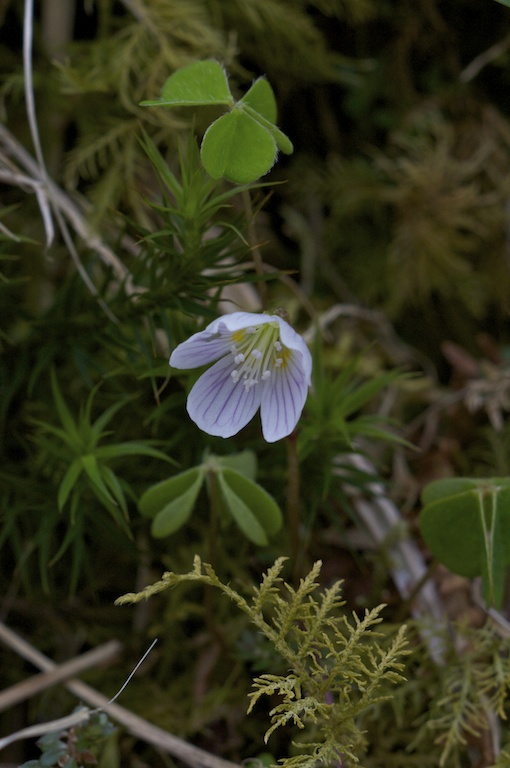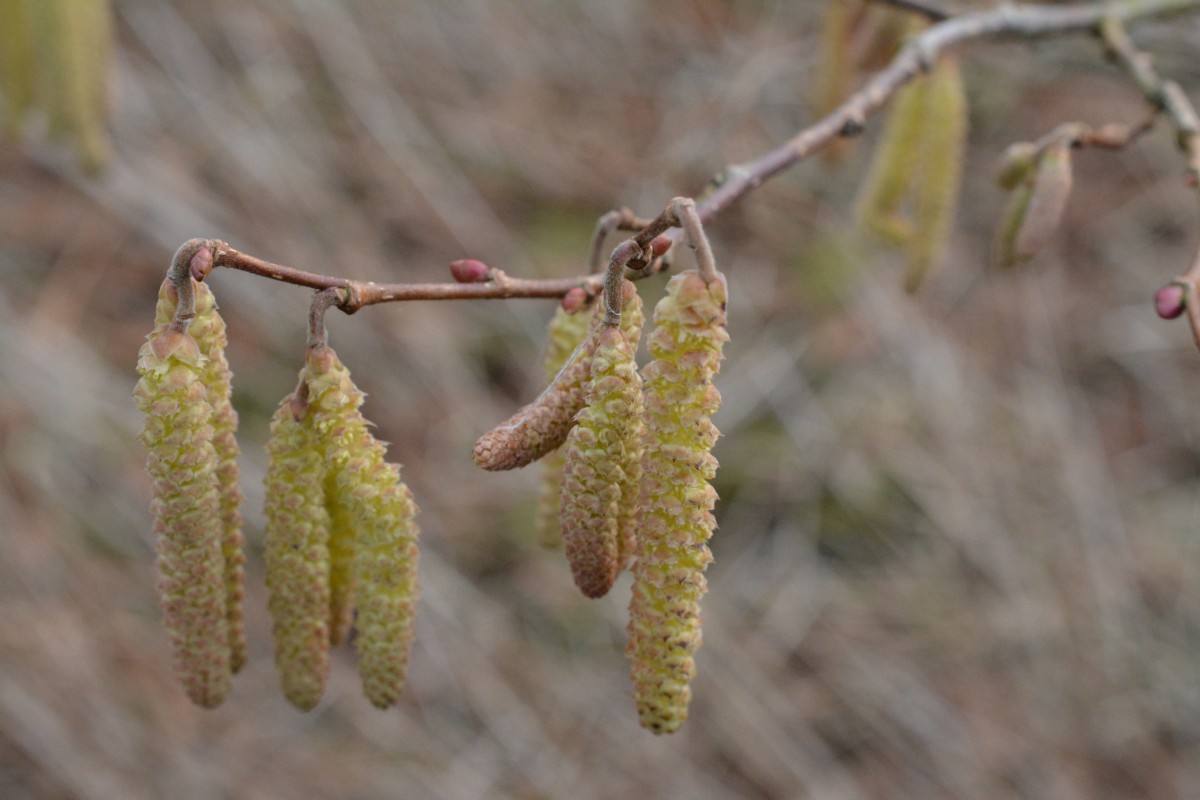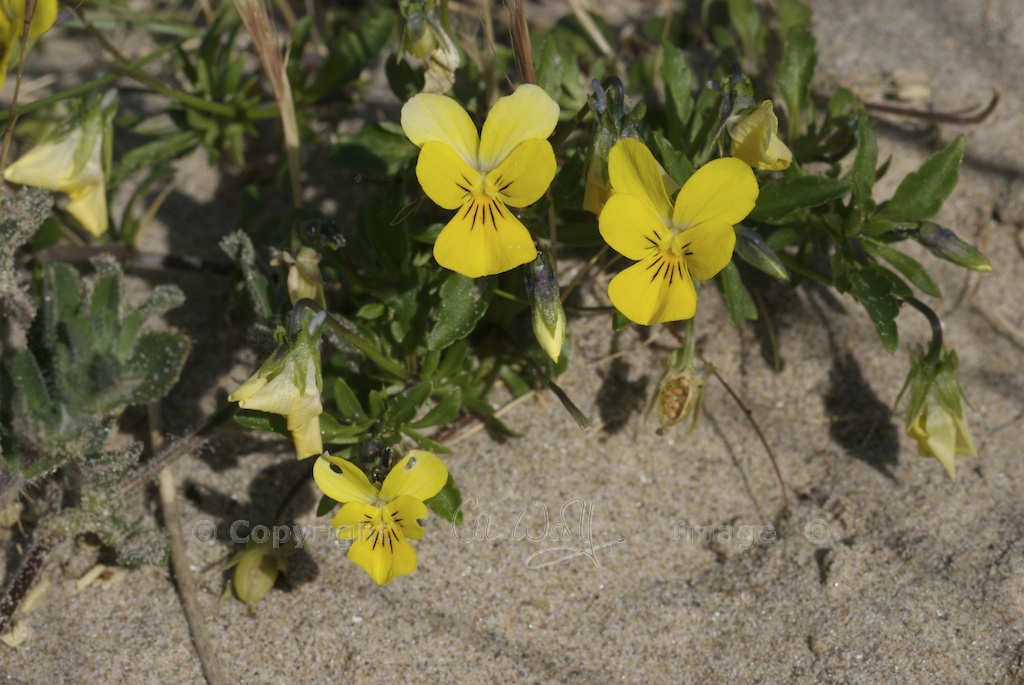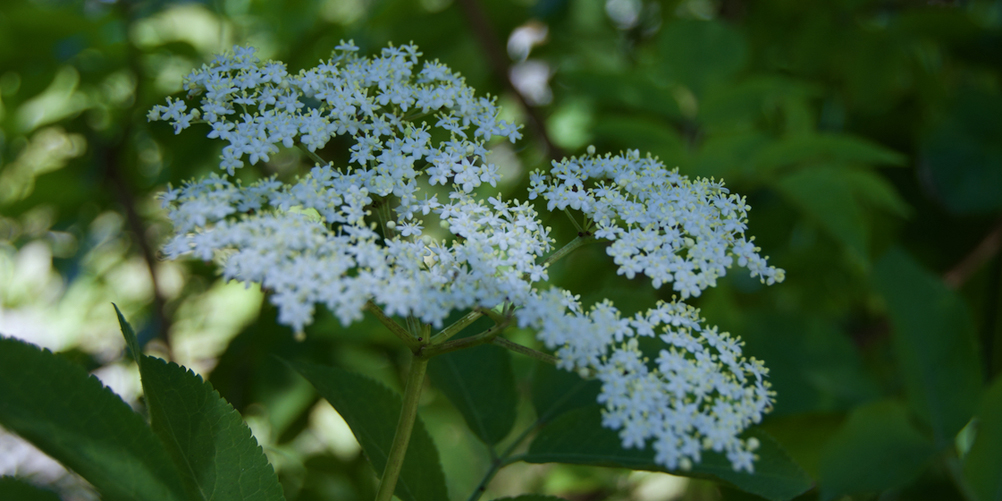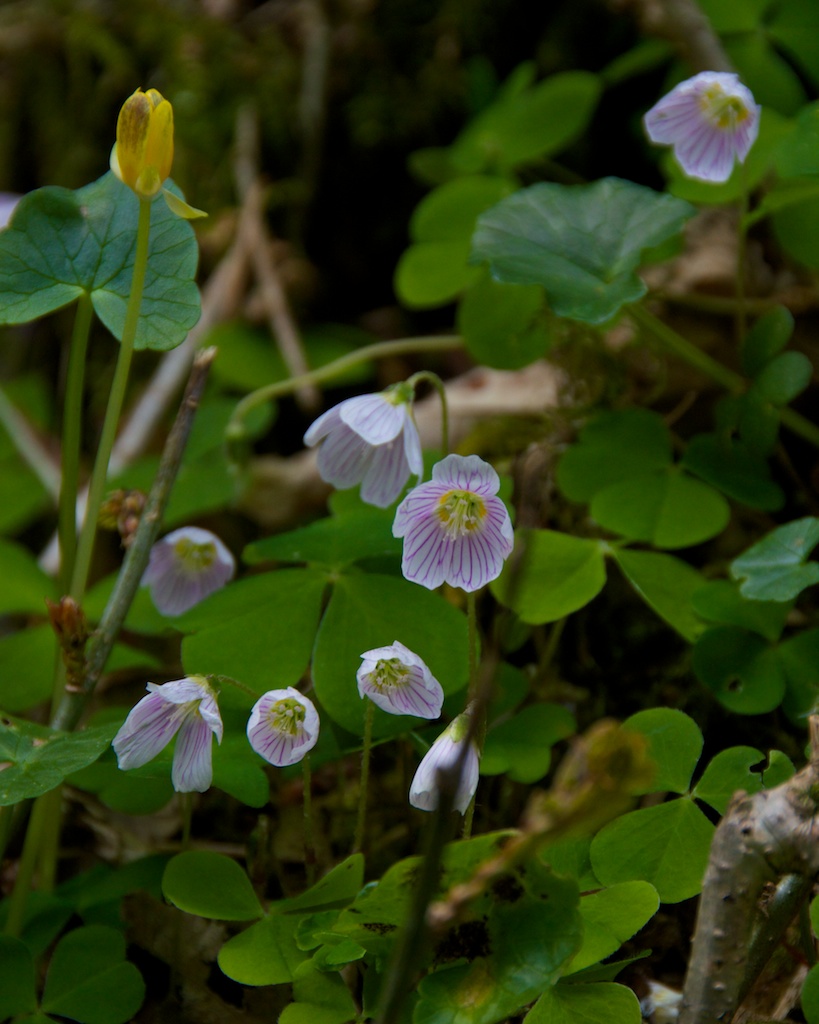
Wood sorrel
 Now that the snow is melting away, exposing the snowdrops which should have flowered and died back in February, we can start looking for the first wild flowers of spring.
Now that the snow is melting away, exposing the snowdrops which should have flowered and died back in February, we can start looking for the first wild flowers of spring.
Among them is wood sorrel (Oxalis acetosella), a ground-hugging plant that nods its delicate bell-shaped blossoms during April and May. In the shade of woodlands and hedgerows it forms a beautiful carpet of green and white, sometimes dotted with the more showy flowers of celandines or wood anemones.
 Wood sorrel is a rhizome: the leaves are borne on thin stems that grow upwards straight out of the soil. They are lime green and heart-shaped, opening flat in the sunlight before folding up, a bit like a loosely pitched tent, at night. Each leaf consists of three equal parts, a feature which is known as ‘trifoliate’; the plant is classed as a ‘trefoil’.
Wood sorrel is a rhizome: the leaves are borne on thin stems that grow upwards straight out of the soil. They are lime green and heart-shaped, opening flat in the sunlight before folding up, a bit like a loosely pitched tent, at night. Each leaf consists of three equal parts, a feature which is known as ‘trifoliate’; the plant is classed as a ‘trefoil’.
While the leaves are interesting for their shape, it is the wood sorrel’s flowers that hold a shy kind of charm. They grow singly, rising from the woodland floor on stems up to four inches in height; their five petals are white, finely striped with mauve. At the heart of the flower, set within a ring of vivid yellow, are the stamens. It is probably being fanciful to imagine that flowers have a character, but if they do, the wood sorrel can’t help but strike you as innocent and self-effacing.
It surprised me to learn that the flowers of wood sorrel are self pollinating – in fact, they don’t need to open for the seeds to be fertilised. In botanical circles, they are described as cleistogamic.
 Wood sorrel’s Latin name comes from the Greek ‘oxys’, meaning ‘sour’ or ‘acid’, while ‘acetosella’ means ‘vinegar’. The plant was once widely eaten as a salad leaf and brewed into remedies for various ailments; but the high concentration of oxalic salts made them unsuitable for anyone with a rheumatic or gouty condition.
Wood sorrel’s Latin name comes from the Greek ‘oxys’, meaning ‘sour’ or ‘acid’, while ‘acetosella’ means ‘vinegar’. The plant was once widely eaten as a salad leaf and brewed into remedies for various ailments; but the high concentration of oxalic salts made them unsuitable for anyone with a rheumatic or gouty condition.
In his ‘Great Herball, or Historie of Plantes’ in 1597, John Gerard noted that: ‘Greene Sauce,’ [made from the leaves] ‘is good for them that have sicke and feeble stomaches… and of all Sauces, Sorrel is the best, not only in virtue, but also in pleasantness of his taste.’
Wood sorrel is widespread in Britain, although it is absent from parts of eastern England. It is also known as ‘Alleluia’ because it blooms between Easter and Pentecost, a time when psalms – many of which end with ‘Alleluia’ – are usually sung. Other common names include Cuckoo’s Meat, Wood Sour and Fairy Bells.
The unusual shape of the leaves is said to have attracted the attention of St Patrick, Ireland’s patron saint, who used them as a living example of the Divine Trinity. There is, however, a very long-standing debate over which plant species St Patrick actually chose: some historians believe it was, in fact, a small form of clover. The confusion might well stem from the similarity of the Gaelic name for young clover (seamróg) and wood sorrel (seamsóg).
For me, the emergence of wood sorrel is one of the first real signs of spring, along with the tentative songs of newly-arrived warblers in a shady woodland. Let’s hope this welcome sunshine coaxes it out of hibernation!
Sources:
More woodland and hedgerow beauties:
 Windflowers – tears of Aphrodite
Windflowers – tears of Aphrodite- Bluebell enchantment
- Early purple orchid
- Primrose – herald of spring

